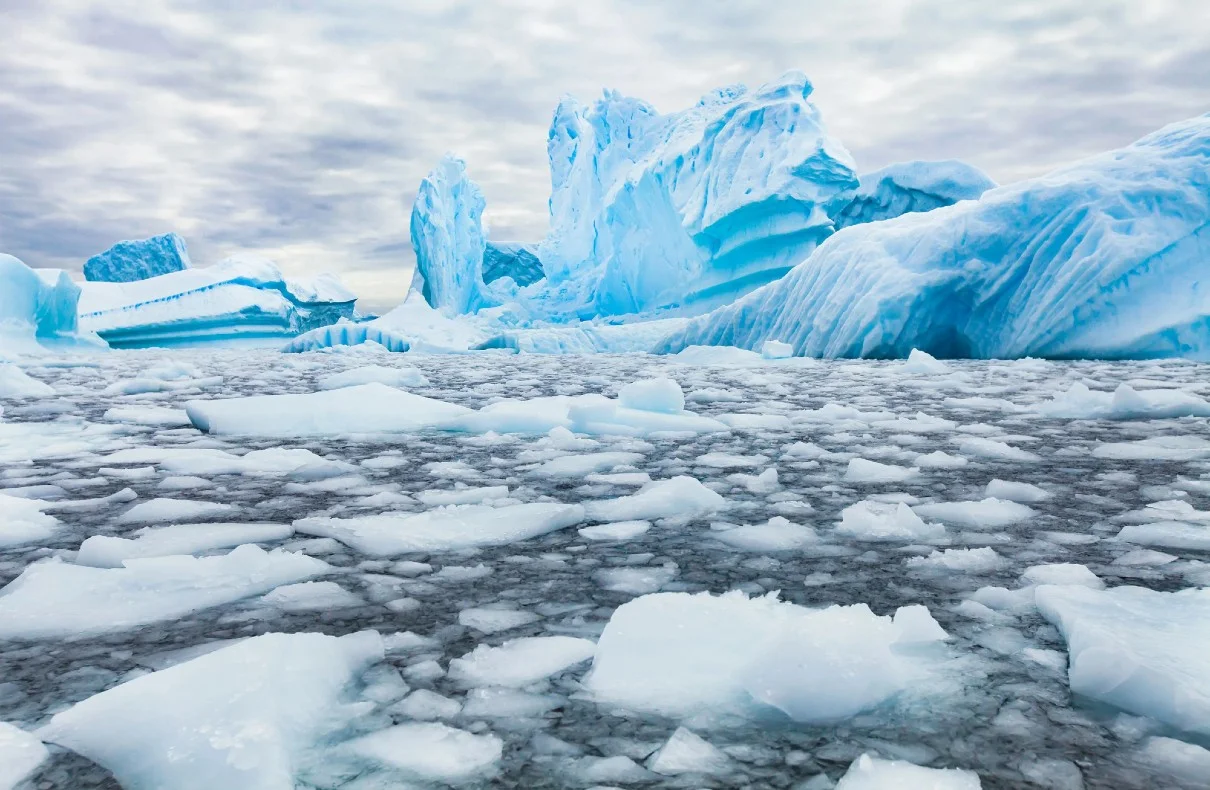
Antarctica, the frozen continent at the southernmost tip of the Earth, has recently witnessed a historic ice loss that serves as a dire warning of a potential climate catastrophe. Scientific research conducted by the University of Cambridge and the British Antarctic Survey has revealed that the West Antarctic Ice Sheet has shrunk by a staggering 450 meters, equivalent to the height of the iconic Empire State Building, in less than 200 years. This unprecedented ice loss, which occurred at the end of the last Ice Age, provides crucial insights into the potential consequences of rising temperatures and the destabilization of ice sheets in the future.
By analyzing ice cores retrieved from the Antarctic region, scientists have uncovered remarkable evidence of the rapid thinning of the West Antarctic Ice Sheet approximately 8,000 years ago. These ice cores, composed of layers of compacted ice crystals formed over thousands of years, hold valuable information about past climate conditions. By examining the temperature at the time the snow fell and the air pressure of the bubbles within the ice, researchers were able to determine the rate of ice thinning.
Dr. Isobel Rowell, a scientist from the British Antarctic Survey, explains, “We wanted to know what happened to the West Antarctic Ice Sheet at the end of the Last Ice Age when temperatures on Earth were rising, albeit at a slower rate than current anthropogenic warming. Using ice cores, we can go back to that time and estimate the ice sheet’s thickness and extent.”
The results of their study confirmed that the ice thinning during that period was indeed rapid. This newfound understanding of past ice loss provides valuable data that can be integrated into improved models to enhance our predictions of future ice sheet behavior.
The trigger for the rapid thinning of the West Antarctic Ice Sheet 8,000 years ago was the infiltration of warm water underneath the edge of the ice sheet. This warm water weakened the connection between the ice and the underlying bedrock, causing a section of the ice to float and form what is now known as the Ronne Ice Shelf. As a result, the neighboring Skytrain Ice Rise, no longer restrained by grounded ice, experienced rapid thinning.
To further support their findings, scientists also observed an increase in the sodium content of the ice approximately 300 years after the initial ice thinning. This increase suggests that the ice shelf retreated, bringing the sea closer to the site where the ice cores were retrieved.
Model predictions based on these historical observations indicate that a substantial portion of the West Antarctic Ice Sheet could disappear within the next few centuries. This alarming prospect would lead to a significant rise in sea levels, posing a grave threat to coastal regions worldwide.
The research team is hopeful that their findings will enable more accurate predictions of the speed at which this ice loss could occur. Professor Eric Wolff from Cambridge’s Department of Earth Sciences emphasizes the importance of understanding the potential destabilization of the ice and its implications: “We now have direct evidence that this ice sheet suffered rapid ice loss in the past. Once the ice thinned, it shrunk really fast. This was clearly a tipping point—a runaway process. This scenario isn’t something that exists only in our model predictions, and it could happen again if parts of this ice sheet become unstable. It’s now crucial to find out whether extra warmth could destabilize the ice and cause it to start retreating again.”
The historic ice loss in Antarctica serves as a poignant reminder of the urgent need for decisive action to address climate change. The consequences of continued global warming are far-reaching and could lead to catastrophic sea-level rise, severe weather events, and the displacement of millions of people living in coastal areas.
Japan warns of impending tsunami following powerful earthquakes in the Sea of Japan
Governments, organizations, and individuals must unite to reduce greenhouse gas emissions, transition to renewable energy sources, and implement sustainable practices. This collective effort is essential to mitigate the impact of climate change and preserve the stability of Earth’s delicate ecosystems.
As individuals, we can contribute by adopting sustainable habits in our daily lives, supporting initiatives that promote renewable energy, and advocating for policies that prioritize environmental conservation. The time to act is now, for the future of Antarctica, and the world as a whole, depends on our commitment to combating climate change.
